In 1994, with the establishment of the new company W.D.E. (Wood Drying Engineering), production moved resolutely towards the optimisation of the manufacturing processes, bringing the construction standard of the vacuum dryers to the highest quality levels, first and foremost thanks to the exclusive use of stainless steel for the body of all its machinery.
In 1997, this business model merged with the history of vacuum wood drying under the name WDE-MASPELL, a leading company in the sector with over 3000 customers worldwide.
The new set-up made it possible to break a new record, namely the construction of a vacuum plant with a capacity of 100 cubic metres, the SQUARE 100 model.
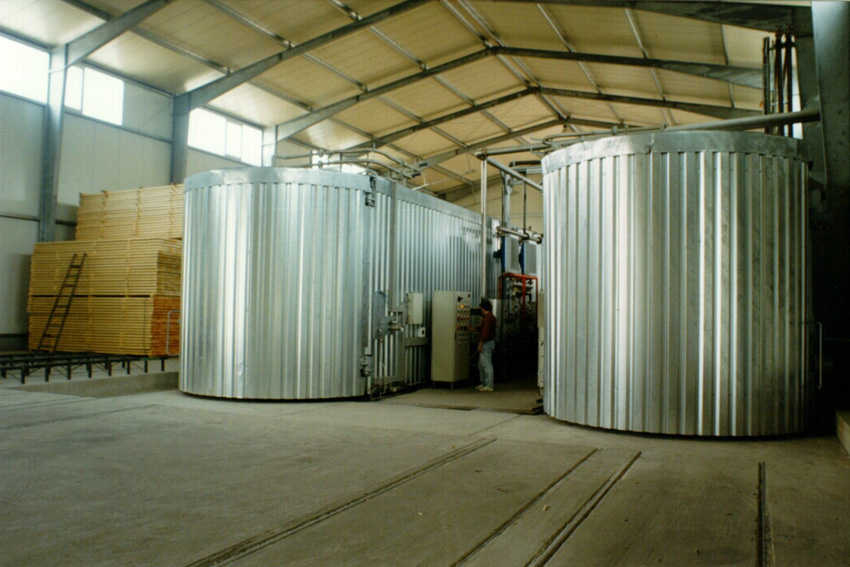
SQUARE 100 model.
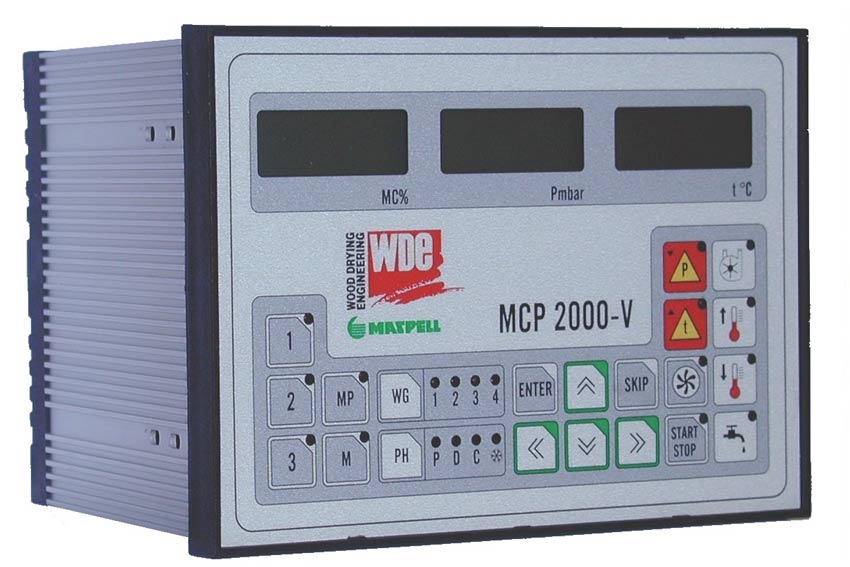
The MCP 2000 microprocessor
In 1998, the fully-automatic MCP 2000 control system was introduced. 40 editable programs, relating to wood species, thickness and moisture content, complete with a precise reading of the parameters needed to conduct the process, connectible to an external computer for exporting and reading the data also via an internet modem (remote access).
The experience on the vacuum drying process gained by the company over more than 30 years, combined with a state-of-the-art system made to measure for it.
Since 2000, the WDE MASPELL construction and distribution network on the Chinese market has been in partnership with G.M.I. TIMBER DRYING EQUIPMENT MANUFACTURING LIMITED.
This experience has been replicated in the Brazilian market since 2002, with WDE MASPELL BRASIL.
In 2005, Umberto Pagnozzi, current joint CEO and third generation of the family, joined the WDE MASPELL team.
His training in the field of marketing and communication followed the evolution of multimedia information channels, for a specific update of the internet platforms available and the introduction of management and technical software that allows for 3D rendering of machinery and the optimisation of production.
In 2008, an innovative idea in another field, also related to woodworking processes, once again made WDE MAPELL cutting-edge.
Vacuum as an inerting agent to subject wood to high temperatures of up to 230°C.
Heat-transformed wood that resists biodegradation without adding pollutants, 100% environmentally friendly.
A machine, the 'Thermo Vacuum'®, for which the company's 91st patent was filed.
In 2010, WDE MASPELL installed the first 6-cubic-metre industrial plant in Italy after several years of experimentation with an industrial prototype machine installed at the IVALSA CNR in San Michele all'Adige, and the drafting and divulging of several research efforts.
The Xylexpo exhibition in Milan, together with events and seminars held independently by WDE MASPELL, witnessed the launch of the new process.
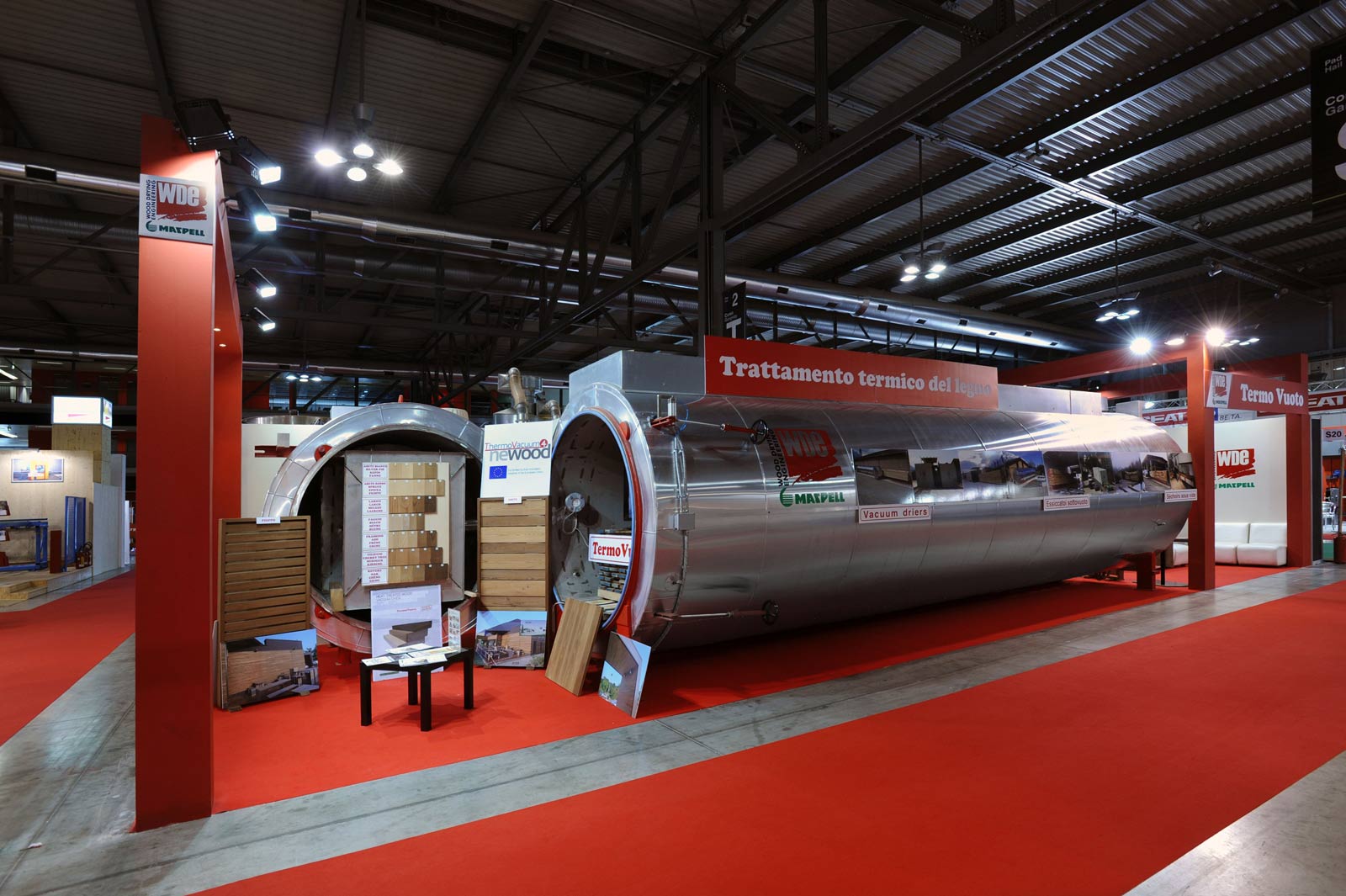 Launch of Thermo Vacuum at XYLEXPO, Milan
Launch of Thermo Vacuum at XYLEXPO, Milan
A technology that revolutionised the conventional heat process and was widely acclaimed on an international level. The same year saw the debut of the Total Vision system with PLC and touch screen, directly derived from the previous MCP 2000, with the addition of different controls, logics and total remote and security operation via internet with the "WDE MASPELL CLOUD” dedicated servers.
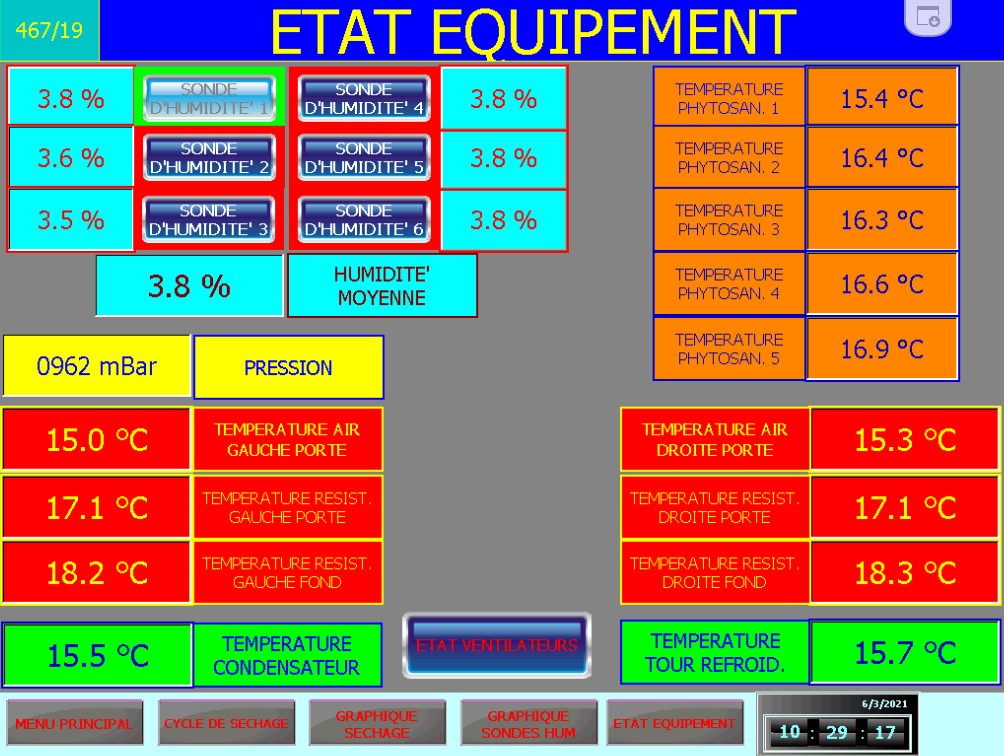
Screen shot of "Total Vision" system
Between 2013 and 2016, as leader of 6 scientific centres, consortia and companies, WDE MASPELL presented and obtained from ECO-INNOVATION funding of more than €1.5 million for the market penetration of vacuum heat-treated wood.
This process led to the characterisation of various wood species, together with the registration of a trademark associated with wood subjected to the Thermo-Vacuum® process - VacWood®.

The VacWood® registered trademark
In the wake of the success achieved within the European funded programme, WDE MASPELL applied to the HORIZON 2020 programme for two years, receiving the prestigious "SEAL OF EXCELLENCE", i.e. one of the highest awards granted by the EU for the most deserving projects, for both presentations. The theme of this new process was the application of VacWood® to engineered woods. Several dozen vacuum systems have been installed worldwide so far, and the market trend is rewarding the scientific and customer-oriented approach that the company has continually maintained over time.
Keep on Drying
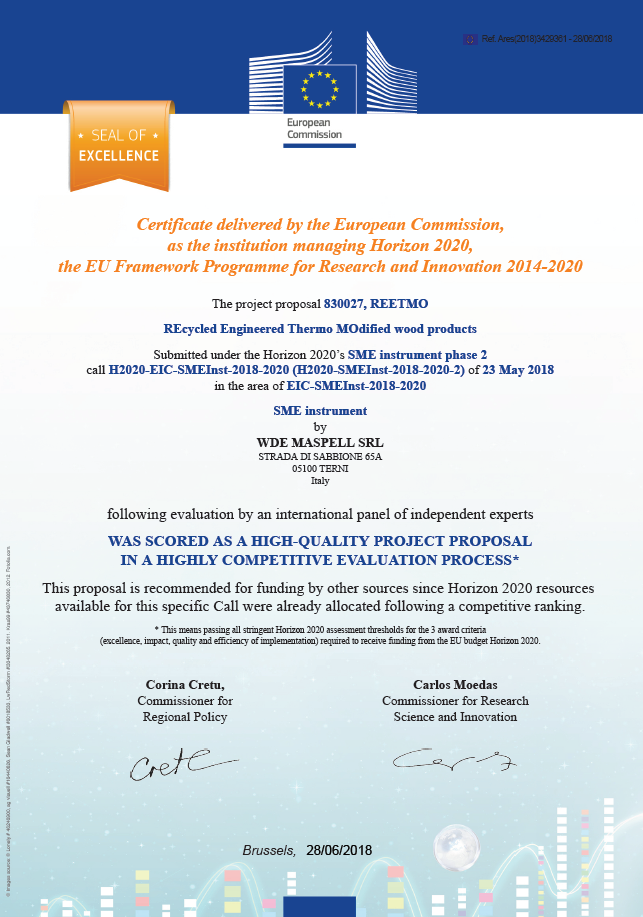
The Seal of Excellence